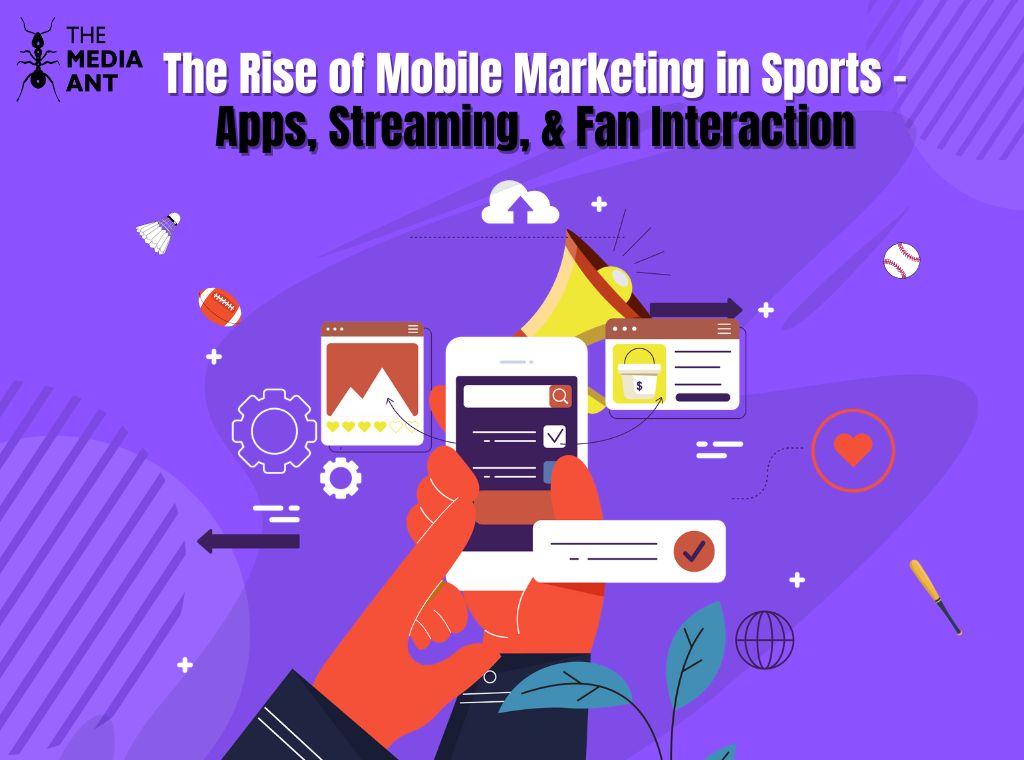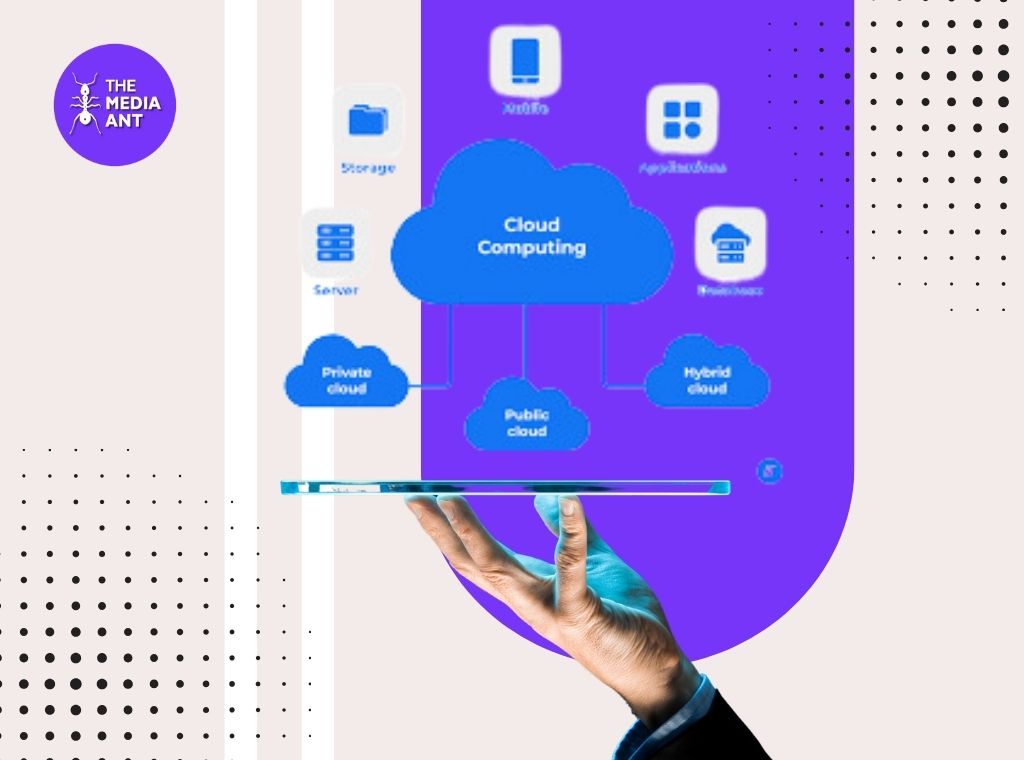Hey there! Have you noticed how the sports world is changing right before our eyes? It’s not just about the games anymore. The real game-changer is how we’re all connecting with sports through our smartphones. It’s like we’ve got this virtual sports marketing arena in our pockets! From those cool apps that keep us updated on every play to catching live games on the go, the way we experience sports is getting a total makeover.
And let me tell you, it’s not just about watching the games. It’s like we’re part of a bigger community now, engaging with our favorite teams and players in ways we never imagined. Ever thought about how these apps and streaming services are making it all happen? Or what’s coming next in this high-tech sports universe? Well, grab your favorite team’s jersey and let’s dive into the exciting world of mobile marketing in sports. We’re talking apps, streaming, fan interaction, and a peek into what the future holds
The Emergence of Sports Mobile Apps

Sports mobile apps have become a vital tool for fans, offering a range of services from game updates to personalized content. These apps provide a direct line to fans, allowing for real-time interaction and engagement. The proliferation of these apps reflects the changing landscape of sports consumption, where mobile access is increasingly paramount.
- Mobile apps have made sports content more accessible than ever. Fans can now follow live games, access statistics, and receive updates directly on their smartphones. This convenience has transformed the way sports are consumed, moving away from traditional methods like television and radio to instant, on-the-go access.
- Sports apps often offer personalized experiences to their users. By leveraging user data, these apps can tailor content, notifications, and recommendations based on individual preferences and past interactions. This personalization enhances user engagement, making each interaction more relevant and appealing.
- Mobile apps provide numerous interactive features that enhance fan engagement. Features like live chats, in-game voting, polls, and social media integration allow fans to interact not only with the content but also with other fans, creating a community around shared interests. This level of interaction fosters a deeper connection with the sport and the team.
- One of the critical features of sports apps is the provision of real-time updates and notifications. Fans can receive live scores, breaking news, and important alerts about their favorite teams and games, ensuring they are always up-to-date, even when they can’t watch the game live.
- Many sports apps are integrating advanced technologies like Augmented Reality (AR) and Virtual Reality (VR) to offer more immersive experiences. For example, AR can be used to provide interactive stats and player information during live games, while VR can offer virtual stadium tours or simulated game experiences.
- For sports organizations and advertisers, mobile apps offer unique monetization and marketing opportunities. Through targeted ads, in-app purchases, and subscription models, these apps can generate significant revenue while also providing a platform for targeted and effective marketing campaigns.
- Sports apps collect vast amounts of data on user preferences, behaviors, and interactions. This data is invaluable for sports organizations and marketers to understand their audience better and tailor their offerings. Analytics derived from this data can inform decisions on content, marketing strategies, and fan engagement initiatives.
- Mobile apps allow sports brands to reach a global audience. Fans from different parts of the world can access content, fostering a global fan base and scaling the reach of local or regional sports organizations.
Live Streaming Sports Apps
These apps have drastically changed how fans consume sports content, bringing live sports events directly to mobile devices. This trend is driven by the rise of smartphones and the increasing demand for on-the-go content consumption.
The Advantages of Live Streaming Sports Apps
Accessibility: One of the primary advantages of live streaming sports apps is their ability to provide fans with access to live sports events from anywhere, at any time. This has greatly increased the reach of sports broadcasts, making it easier for fans to watch their favorite events without being tethered to a traditional Television setup.
Interactivity: Many of these apps offer interactive features such as live commenting, in-app voting, and social media integration. This allows fans to engage with the content and with each other, enhancing the overall viewing experience.
Personalization: Live streaming apps often provide personalized experiences for users. They may offer tailored content recommendations, notifications for upcoming games, and the ability to follow favorite teams or sports.
Multimedia Content: Besides live streaming, these apps often include additional multimedia content like highlights, replays, interviews, and expert analysis, enriching the sports viewing experience.
Major Players in the Market

In the Indian industry, the rise of Over-The-Top (OTT) platforms has significantly transformed the live sports streaming market. The major players in this market are distinguished by their varied content offerings and target audiences.
Viacom18 has made substantial advancements in enhancing the digital sports viewing experience, notably through the overhaul of its connected TV platform, which now offers 4K technology. The strategic partnership with Moloco and the utilization of advanced algorithms have enabled JioCinema to deliver targeted ads to a peak concurrent viewership of 32 million users during Tata IPL 2023, illustrating the platform’s scalability and effectiveness in engaging a large audience.
The unique audience for IPL on JioCinema connected TV platform exceeded 125 million, tripling the viewership on HD TV. With more than 40 exclusive advertisers, JioCinema’s decision to maintain stable ad rates is strategically designed to attract significant advertising investments, leveraging the growing shift from linear television to digital platforms and CTV.
JioCinema is introducing innovative advertising features like the “Brand Spotlight” and market-specific deals, which provide unique opportunities for brands to engage with viewers. The estimated CPM rates for IPL live stream and targeted inventory highlight the platform’s appeal to advertisers seeking precise audience targeting.
The anticipated surge in CTV popularity, with an expected 100 million CTV households in India and ad spends on CTV projected to reach $400 million by 2027, signifies a major shift in TV viewing habits and advertising strategies. This shift presents a significant opportunity for platforms like JioCinema to capitalize on the growing trend and drive substantial revenue growth through innovative advertising solutions.
Disney+ Hotstar holds a substantial market share, primarily due to its strong lineup of live sports content, including cricket, which is immensely popular in India. As of 2023, it leads the market with a 41% share. Eros Now follows with a 24% market share, offering a mix of movies, original series, and music videos.
Amazon Prime Video, with a 9% market share, and Netflix, holding 7%, are also key players in the Indian OTT market. These platforms are known for their diverse and global content offerings, including Hollywood movies and TV shows, alongside Indian content.
ZEE5 and ALTBalaji, each with a 5% share, along with SonyLIV at 3%, are other notable platforms. These services offer a mix of Indian movies, TV shows, and live sports, with SonyLIV known for its sports content including football, tennis, and pro-wrestling.
The OTT market in India has been growing rapidly, driven by the increasing penetration of smartphones and high-speed broadband services. Live sports, in particular, have become a key driver for OTT platforms in India. For instance, the loss of the IPL digital rights by Disney+ Hotstar to Viacom 18 is expected to significantly impact the subscriber base of these platforms.
Moreover, there’s an increasing emphasis on regional language content. Platforms like Amazon Prime Video, Disney+ Hotstar, SonyLIV, Zee5, and Netflix are investing in regional content to cater to a diverse audience.
The OTT video market in India is expected to grow from INR 22.62 Bn in 2020 to INR 93.67 Bn by 2025, at a CAGR of 33.8%. This growth is a testament to the changing content consumption habits in India, where live sports and regional content are becoming increasingly important.
Enhancing Fan Interaction with Mobile Features
Mobile marketing in sports refers to the various ways mobile technology is used to deepen and enrich the engagement between sports fans and their favorite sports, teams, or athletes. This enhancement is largely facilitated through features in sports-related mobile apps and social media integration.
Interactive Features in Mobile Marketing
Sports apps now include interactive elements such as live chats, polls, and quizzes. These features encourage fans to actively participate during live events, share opinions, and engage in community discussions. For instance, during a live match, fans might use an app to vote for the player of the match or engage in trivia about the team
Personalization and User Experience
Personalization is a critical component in fan engagement. Mobile apps can use data analytics to understand user preferences, like favorite teams or players, and tailor content accordingly. This personalization can manifest in customized news feeds, targeted notifications about upcoming games or player stats, and even personalized merchandise offers. The goal is to create a unique and relevant experience for each user, enhancing their connection to the sport.
Social Media Integration
The integration of social media within sports apps provides fans a platform to share their experiences and connect with a broader community. Features might include the ability to share scores or highlights on social media platforms directly from the app, participate in trending conversations about a game, or follow live tweets or updates from sports analysts. This integration helps to create a more cohesive and immersive fan experience by bridging the gap between the app and social media marketing platforms.
The Future of Mobile Marketing in Sports

Enhanced Personalization through AI: Mobile marketing in sports will increasingly leverage artificial intelligence to offer highly personalized content. For example, a sports app could use AI to analyze a user’s viewing habits and then suggest relevant matches, news, or merchandise based on their favorite teams or athletes.
Immersive AR and VR Experiences: Augmented and Virtual Reality technologies will provide fans with immersive experiences. An instance of this could be an AR app that allows fans to view 3D replays of key moments from a game or a VR experience where fans can feel like they’re in the stadium.
Integration with Wearable Technologies: Wearables like fitness trackers and smartwatches will become more integrated into sports fan experiences. For instance, a running app could collaborate with a marathon event, allowing users to track their training progress and receive tips and updates about the event.
Social Media and Influencer Marketing: The use of social media and influencers in sports marketing will continue to grow. A notable example is an athlete or sports personality promoting a brand or product on their social media platforms, creating a more authentic connection with their fans.
Data-Driven Engagement and Marketing: The use of data analytics will become more sophisticated in understanding and engaging sports fans. An example is a sports team using fan data from their mobile app to personalize marketing campaigns or tailor the in-stadium experience based on fan preferences and behaviors.
The rise of mobile marketing in sports represents a significant shift in how fans engage with sports content. With the continuous advancement of technology, the sports industry is set to offer even more innovative and engaging experiences for fans worldwide.





